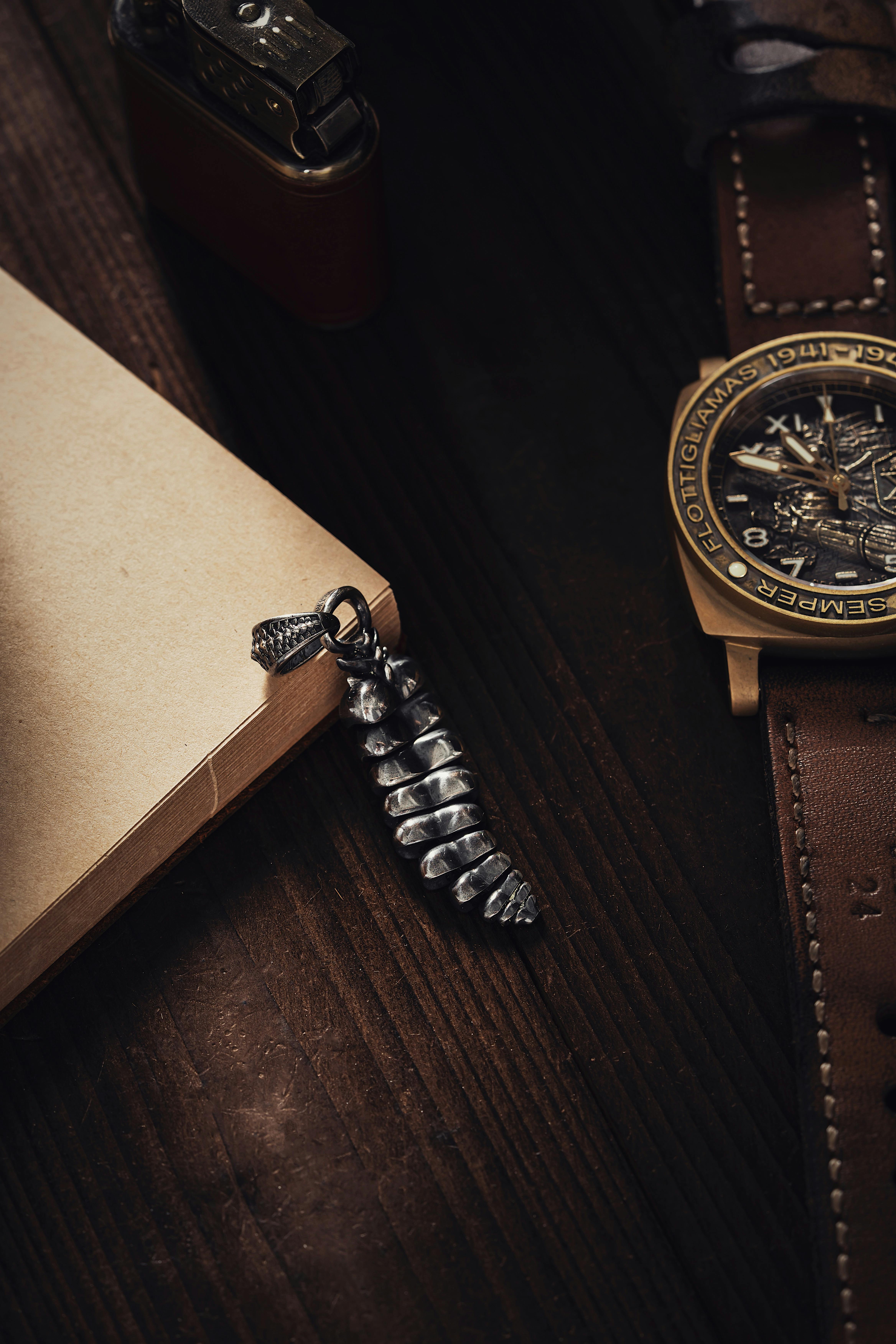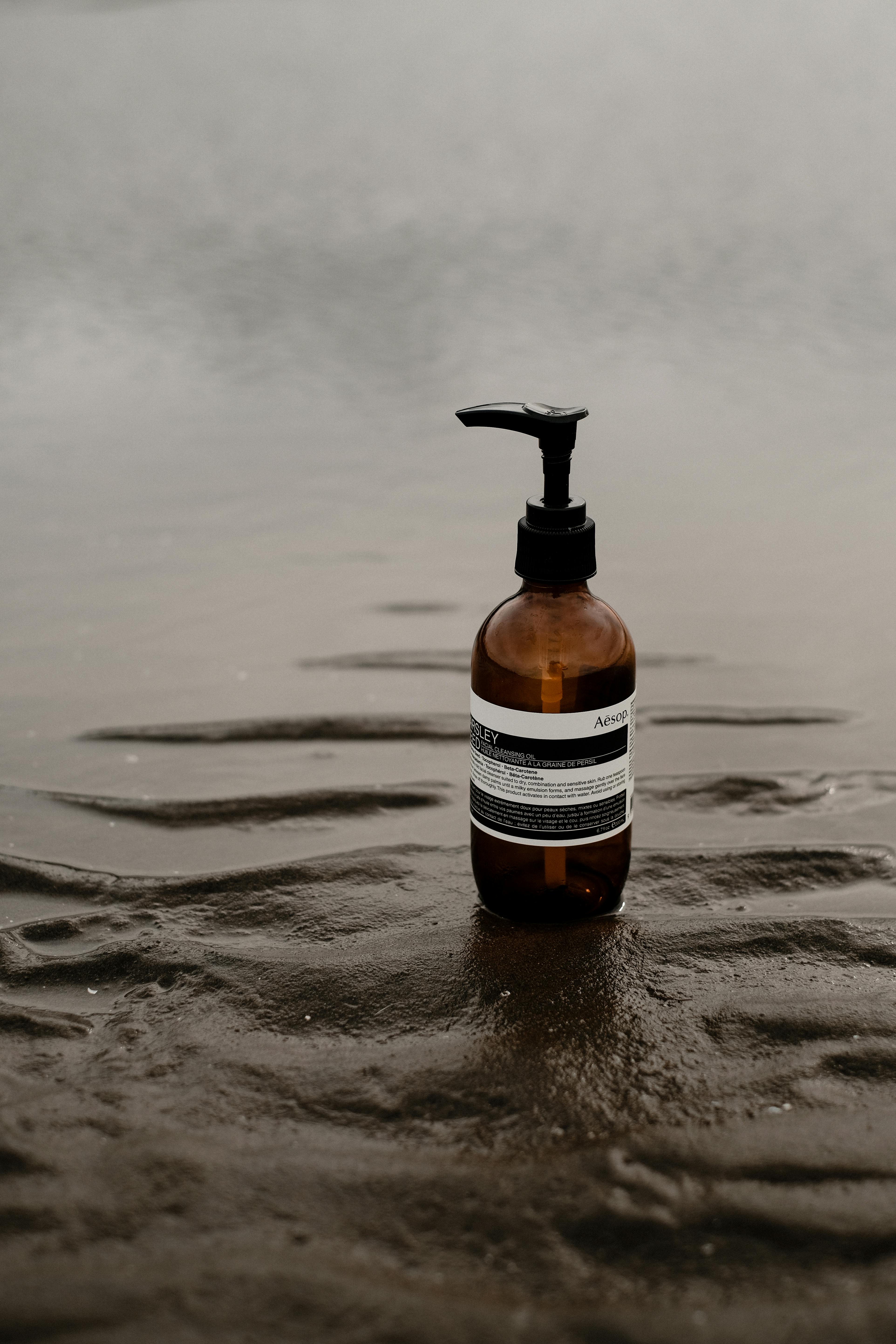Taking care of your luxury watch is essential to ensure its longevity and precision. In this article, we will explore the importance of servicing your timepiece regularly and delve into the details of what a typical service entails. By understanding the frequency at which you should service your watch and the comprehensive tasks involved in a service, you can ensure that your beloved timepiece continues to function flawlessly for years to come. So, let’s dive into the world of watch maintenance and explore the intricacies of servicing luxury watches.
Frequency of Watch Servicing
Importance of regular servicing
Regular servicing is of utmost importance to ensure the longevity and functionality of your luxury watch. While it may seem like an unnecessary inconvenience, servicing your watch regularly can prevent potential issues and keep it running smoothly for years to come. A well-maintained watch not only retains its accuracy and performance but also retains its value over time.
General guideline for service intervals
While there is no one-size-fits-all answer to how often you should service your luxury watch, a general guideline is to have it serviced every 3-5 years. However, this interval can vary depending on several factors, such as the brand and model of your watch, the complexity of its movement, and how frequently you wear it. Some watches, especially those with complex complications, may require more frequent servicing.
Factors affecting service frequency
Several factors can affect the frequency at which you should service your luxury watch. The first and most obvious factor is the amount of wear and tear your watch is exposed to. If you wear your watch daily or subject it to harsh environments or extreme sports, it may require more frequent servicing. Additionally, the type of movement in your watch can also influence its service frequency. Mechanical watches typically require more frequent servicing compared to quartz watches due to the intricate nature of their mechanisms.
Signs That a Watch Requires Servicing
Loss or gain in timekeeping accuracy
One of the telltale signs that your luxury watch requires servicing is a noticeable loss or gain in timekeeping accuracy. If you find that your watch consistently runs fast or slow, it may be due for a service. A watch that no longer keeps time accurately may indicate issues with the movement or other internal components that need attention from a professional watchmaker.
Unusual noises or vibrations
Another sign that your watch requires servicing is the presence of unusual noises or vibrations. If you notice any ticking sounds, rattling noises, or a noticeable increase in vibrations, it could be an indication of worn-out parts or a misalignment within the movement. Addressing these issues through timely servicing can prevent further damage and ensure smooth operation.
Issues with winding or date change
If you experience any difficulties while winding your watch or notice problems with the date change mechanism, it is advisable to have your watch serviced. These issues can be indicative of worn-out or misaligned components, which can affect the overall functionality of your watch. Timely servicing can rectify these problems and restore the smooth operation of your watch.
Moisture or condensation inside the watch
Moisture or condensation inside your luxury watch is a clear sign that it requires immediate servicing. The presence of moisture can damage the delicate internal components, leading to corrosion and irreversible damage. If you notice any fogging or condensation on the inside of the crystal or have accidentally exposed your watch to water, it should be taken to a professional watchmaker as soon as possible.
Visible damage or wear
Visible damage or wear, such as scratches on the crystal or case, loose or damaged hands, or a worn-out bracelet, should not be overlooked. While these issues may not directly impact the timekeeping ability of your watch, they can affect its overall aesthetics and functionality. Servicing can address these cosmetic concerns and ensure that your luxury watch looks and performs its best.

Understanding Watch Servicing
Purpose of watch servicing
The purpose of watch servicing is to maintain and restore the accuracy, performance, and functionality of your luxury watch. Over time, the intricate components within a watch can become dirty, dry, or worn-out, leading to issues with timekeeping and overall operation. Servicing involves disassembling the watch, cleaning all components, lubricating the necessary parts, identifying and replacing worn-out components, and reassembling and adjusting the watch for optimal performance.
Components involved in servicing
Servicing a luxury watch involves working on various components to ensure their proper functioning. Some of the key components addressed during a typical service include the movement, which consists of the escapement, balance wheel, and mainspring; the dial, hands, and markers; the crown and pushers; the crystal; and the case and bracelet. Each component is carefully inspected and serviced as required to ensure the overall health of the watch.
Expertise required for servicing
Due to the intricate nature of luxury watches and the delicacy of their components, servicing requires specialized expertise and knowledge. It is crucial to entrust your timepiece to a qualified and experienced watchmaker who understands the intricacies of your specific watch brand and model. Professional watchmakers have the necessary tools, training, and expertise to handle the disassembly, cleaning, lubrication, and reassembly of your watch with the utmost care and precision.
The Process of Watch Servicing
Initial assessment and diagnostics
The first step in the process of watch servicing is the initial assessment and diagnostics. A professional watchmaker will thoroughly examine your luxury watch, both visually and functionally, to identify any potential issues or areas of concern. They will record any specific instructions or preferences you may have and discuss the service requirements and estimated costs with you.
Disassembly of the watch
Once the initial assessment is complete, the watchmaker will carefully disassemble the watch into its individual components. This process involves removing the case back, crown, and crystal, as well as detaching the bracelet or strap, if necessary. Specialized tools and techniques are employed to ensure that no damage occurs during the disassembly process.
Cleaning and lubrication of components
After the watch has been disassembled, the individual components are cleaned thoroughly to remove any dirt, dust, or debris that may have accumulated over time. The cleaning process varies depending on the type of watch and its components, but it typically involves the use of specialized cleaning solutions and equipment. Once cleaned, the necessary parts are lubricated with high-quality oils and greases to ensure smooth movement and minimize friction.
Replacement of worn-out parts
During the servicing process, any worn-out or damaged parts identified during the initial assessment are replaced. These parts can include worn-out mainsprings, damaged balance wheels, or cracked crystals, among others. Replacing these components is crucial for maintaining the accuracy, performance, and longevity of your luxury watch.
Reassembly and adjustment
After cleaning, lubrication, and replacement of worn-out parts, the watch is meticulously reassembled by the watchmaker. This process requires utmost precision to ensure that each component is correctly placed and aligned. The watchmaker will also check and adjust the various mechanisms, such as the mainspring tension, to guarantee optimal performance.
Testing and quality control
Once reassembled, the serviced watch undergoes rigorous testing and quality control procedures. These tests may include checking the accuracy of timekeeping, ensuring proper functioning of complications such as chronographs or date displays, and verifying water resistance, if applicable. The watchmaker will make any final adjustments required to achieve optimal performance and reliability.

Choosing a Trusted Watch Service Provider
Researching reputable watchmakers
When choosing a watch service provider, it is essential to conduct thorough research to ensure their reputation and expertise. Look for reputable watchmakers or authorized service centers with a proven track record of servicing luxury watches. Online research, forums, and watch enthusiasts’ communities can provide valuable insights and recommendations.
Reading reviews and testimonials
Reading reviews and testimonials from previous customers can give you an idea of the quality of service provided by a watch service provider. Look for positive feedback regarding their expertise, professionalism, and attention to detail. Pay attention to any negative reviews or complaints and consider those as potential red flags.
Inquiring about certifications and experience
Before entrusting your luxury watch to a service provider, inquire about their certifications and experience. Certified watchmakers have undergone specialized training and are often preferred for their expertise in specific watch brands. Additionally, ask about the experience they have in servicing luxury watches, particularly those with similar complications or movements to your own timepiece.
Seeking recommendations from watch enthusiasts
Seeking recommendations from watch enthusiasts or fellow collectors can be invaluable in finding a trusted service provider. Watch enthusiasts often have firsthand experience with various watchmakers and can provide insights into their quality of work, attention to detail, and overall customer satisfaction.
Ensuring appropriate equipment and facilities
Lastly, ensure that the watch service provider has access to appropriate equipment and facilities to handle the servicing of luxury watches. Specialized tools, cleaning solutions, and testing equipment are essential for maintaining the integrity and performance of your cherished timepiece. A reputable service provider should have a well-equipped workshop that adheres to industry standards.
Cost of Luxury Watch Servicing
Factors influencing the cost
The cost of luxury watch servicing can vary depending on several factors. These include the brand and model of the watch, the complexity and age of the movement, the extent of servicing required, and even the location of the service provider. Generally, watches with more complications or those from high-end luxury brands may require more intricate servicing, which can contribute to a higher cost.
Typical price range for different types of watches
The price range for luxury watch servicing can vary significantly. As a general guideline, basic servicing for a mechanical luxury watch can cost anywhere from $200 to $500, while servicing for a watch with complicated complications or a high-end brand can range from $500 to $1,000 or more. It is important to note that these figures are estimates, and the actual cost can vary depending on the factors mentioned earlier.
Considering long-term investment value
While the cost of luxury watch servicing may seem significant, it is essential to consider the long-term investment value. Regular servicing helps maintain the accuracy, performance, and functionality of your watch, ensuring that it retains its value over time. A well-maintained watch is also more likely to attract potential buyers should you decide to sell or trade it in the future.

Maintaining a Luxury Watch Between Servicing
Proper storage and handling
Proper storage and handling of your luxury watch between servicing can contribute to its longevity and performance. When not in use, store your watch in a suitable watch box or case, preferably in a cool and dry environment. Avoid exposing your watch to extreme temperature changes or direct sunlight, as these can affect its accuracy and potentially damage components.
Regular cleaning and maintenance
Regular cleaning and maintenance are crucial for preserving the aesthetics and functionality of your luxury watch between servicing intervals. Use a soft, lint-free cloth to wipe the exterior of the watch and remove any dirt or fingerprints. Avoid using harsh chemicals or abrasive materials that can damage the finish or crystals. If your watch is water-resistant, rinse it under running water periodically to remove any dirt or residue.
Avoiding extreme conditions
Luxury watches are built to withstand everyday wear, but exposure to extreme conditions can still be detrimental. Avoid wearing your watch during activities that subject it to excessive shocks, vibrations, or magnetic fields. Similarly, avoid exposing your watch to extreme temperatures, high humidity, or corrosive substances, as these can compromise its accuracy and longevity.
Ensuring water resistance
If your luxury watch is water-resistant, it is essential to ensure that the water resistance is maintained. Regularly check the water resistance rating of your watch and have it tested by a professional if needed. Avoid submerging or exposing your water-resistant watch to water if it is not intended for underwater use. It is also advisable to have the seals and gaskets replaced during each servicing to maintain the water resistance integrity.
Common Misconceptions About Watch Servicing
Myth: Servicing is only necessary when a watch encounters problems
Contrary to popular belief, watch servicing is not only necessary when a watch encounters problems. Regular servicing, even when the watch is functioning correctly, is essential to prevent potential issues and maintain the overall health and performance of the timepiece. By addressing minor concerns early on, major problems and costly repairs can often be avoided.
Myth: Non-operational watches do not require servicing
Even if your luxury watch is not currently operational, it still benefits from regular servicing. In fact, a non-operational watch may require even more attention as it can be prone to additional issues such as dried-up lubricants or corroded components. By having your non-operational watch professionally serviced, you increase the chances of restoring it to full functionality.
Myth: Servicing voids the watch’s warranty
Another common myth is that servicing a luxury watch voids its warranty. However, this is generally not the case. In fact, many watch manufacturers require regular servicing as a condition of their warranty to ensure that their watches are properly maintained. It is important to check the warranty terms and conditions specific to your watch brand to understand any servicing requirements or limitations.
The Benefits of Regular Watch Servicing
Preserving accuracy and performance
Regular watch servicing helps preserve the accuracy and performance of your luxury timepiece. With precise cleaning, lubrication, and adjustment, the internal mechanisms of the watch can continue to function optimally, ensuring reliable timekeeping and smooth operation.
Extending the lifespan of the watch
By addressing potential issues and performing necessary maintenance, regular servicing can extend the lifespan of your luxury watch. Worn-out components can be replaced before they cause further damage, and the overall health of the watch can be maintained, allowing it to be enjoyed for generations to come.
Preventing costly repairs
Regular servicing can help prevent costly repairs further down the line. By identifying and addressing minor issues early on, potential major problems can be mitigated, saving both time and money. The cost of routine servicing is often significantly lower than the cost of major repairs or component replacements.
Maintaining resale value
A luxury watch that is well-maintained and regularly serviced retains its resale value. Potential buyers often prefer watches that have a documented service history, as it provides reassurance regarding the watch’s condition, functionality, and longevity. Regular servicing and maintenance can help ensure that your luxury watch retains its value over time.
Ensuring reliability
Ultimately, regular watch servicing ensures the reliability of your luxury timepiece. A well-serviced watch inspires confidence in its owner, knowing that it will perform flawlessly and accurately throughout its lifetime. Whether it’s for special occasions or everyday use, a reliable luxury watch is a testament to its craftsmanship and quality.
Conclusion
Regular servicing of your luxury watch is of utmost importance to maintain its accuracy, performance, and longevity. By adhering to general guidelines for service intervals, paying attention to signs that your watch requires servicing, and choosing a trusted service provider, you can ensure that your timepiece receives the necessary care it deserves. Investing in watch maintenance offers numerous benefits, ranging from preserving accuracy and performance to preventing costly repairs and maintaining resale value. So, make regular watch servicing a priority, and enjoy your luxury timepiece for years to come.